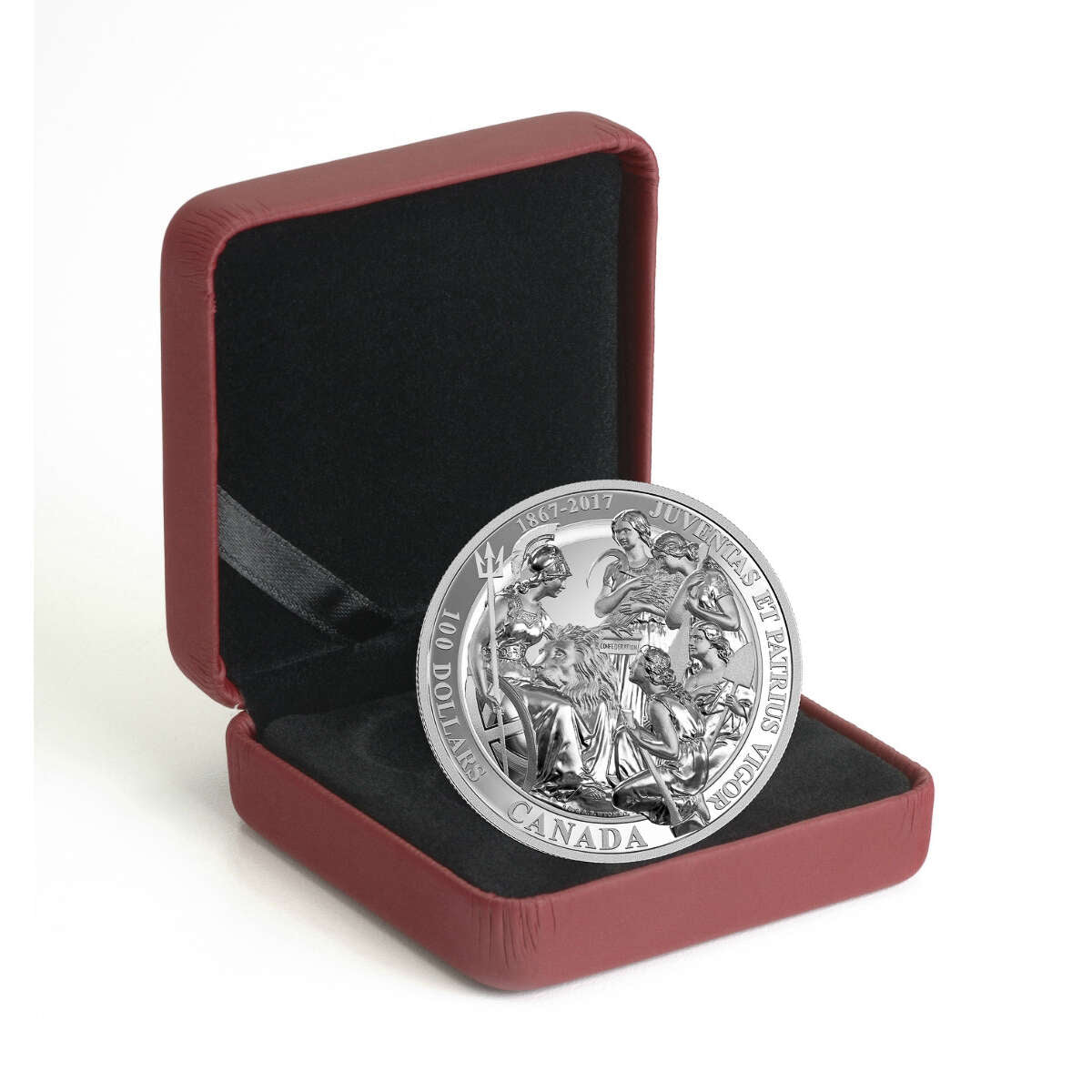Description
This ten ounce fine silver coin combines important Canadian history, spectacular high relief art, a double effigy of Queen Elizabeth and Queen Victoria, and an extremely low mintage of just 1,000 coins. Royal Canadian Mint officials have indicated that this appears to be the fastest sell out from the RCM ever, being completely sold out from the RCM within just a couple of minutes of the official release. As a pure silver coin issued by the Royal Canadian Mint, this item is GST/HST exempt.
1867 Confederation Medal Design
To celebrate Canadian Confederation in 1867, the Fathers of Confederation sought to mark the event by creating an extraordinary commemorative medal, which was commissioned to be produced (in England) by the leading engravers of the era, J.S. and A.B. Wyon. The resulting medal has been considered a masterpiece of medallic art, and the few surviving original silver specimens today sell for several thousand dollars each. In celebration of Canada’s 150th anniversary, the Royal Canadian Mint has recreated this spectacular design on a new ten ounce fine silver coin with a $100 denomination. The design uses the same large 3 inch (76.25 mm) diameter as the original medals issued in 1867.
The reverse design is inspired by the rich medallic traditions the era, and features allegorical representations of both the fledgling Dominion of Canada and Great Britain. Britannia, Great Britain’s timeless allegory, is peacefully seated and is adorned with a helmet and armour. She holds a trident on her right as a shield ornamented with the Royal Union Flag rests on her side. A lion, the stalwart symbol of Great Britain, is seated at Britannia’s feet and is resting its head on her knees. Britannia is presenting a figurative representation of the British North American Act that reads “CONFEDERATION”.
The CONFEDERATION scroll is being bestowed upon four young maidens, who gaze cherishingly upon the matronly Britannia. The maidens represent the four original provinces in the British North America Act (clockwise from the top): Ontario with a sickle and sheaf symbolizing agriculture; Quebec holding a canoe paddle that represented commerce of the era; Nova Scotia with a shovel representing its rich mining; and New Brunswick with an axe, a representation of forestry.
The design also features the Latin adage JUVENTAS ET PATRIUS VIGOR, or YOUTH AND PATRIOTIC STRENGTH, as was presented on the original design in 1867. In 1867, these were two of the greatest attributes of the new nation. For this 150th anniversary commemorative, the year has been updated from “1867” to the new double date “1867-2017”, together with the word “CANADA” and the face value “100 DOLLARS”
The obverse design is new for Canada’s 150th Anniversary of Confederation, but also draws on the tradition of the original Confederation medal and the first coins of Canada. While the obverse of the original 1867 medal featured a single effigy of Queen Victoria, the reigning monarch at the time of Confederation, the obverse of this new coin features the dual effigies of Her Majesty Queen Elizabeth II by Susanna Blunt and Queen Victoria by Leonard Charles Wyon. Queen Victoria is featured as the monarch at the time of Confederation in 1867, while Queen Elizabeth II appears as our monarch at the time of ‘Canada 150’. The obverse also includes the cypher used by Her Majesty Queen Elizabeth II, and the cypher that was used by Queen Victoria. Each cypher is ensigned with a crown depicted in a style specifically used by each monarch. This new Canada 150 commemorative obverse is common to all three coins in this series.





